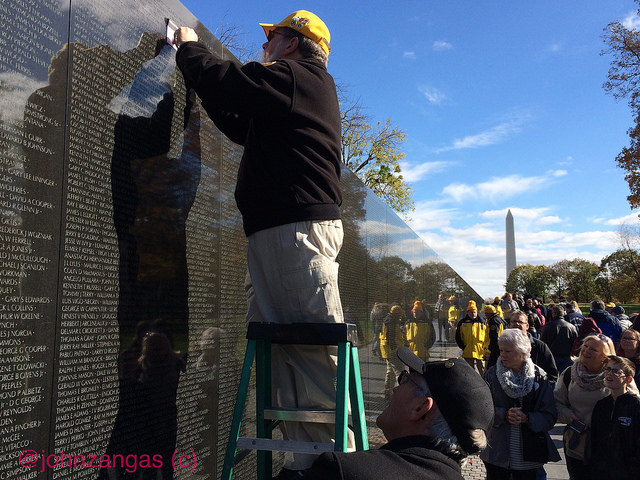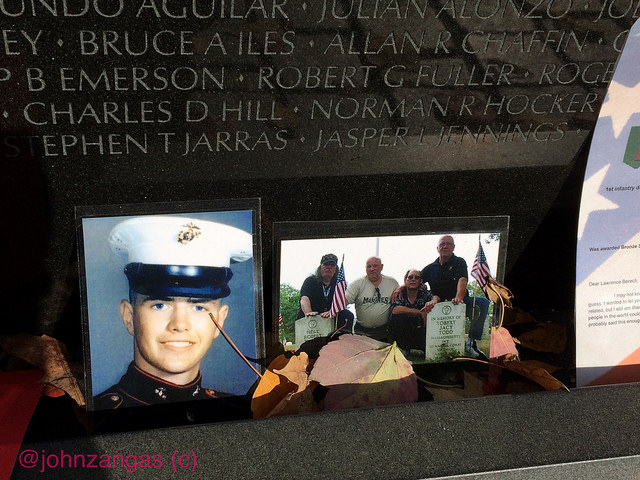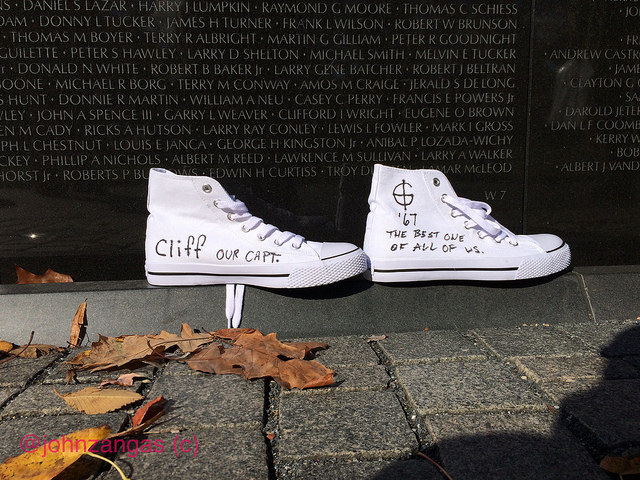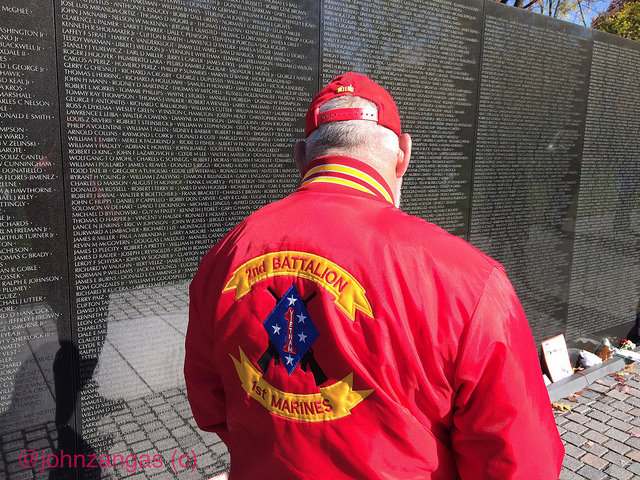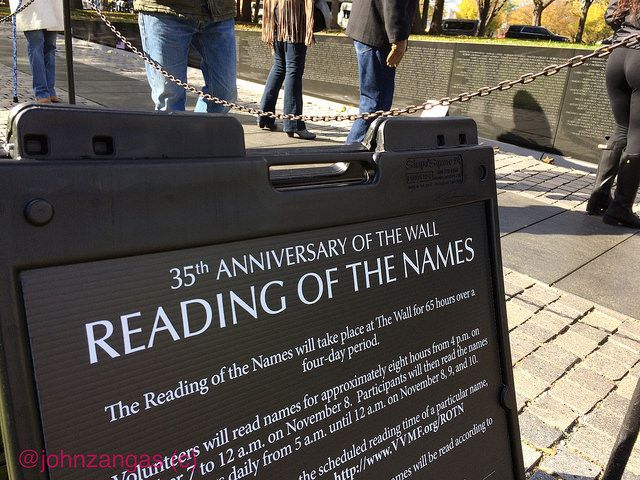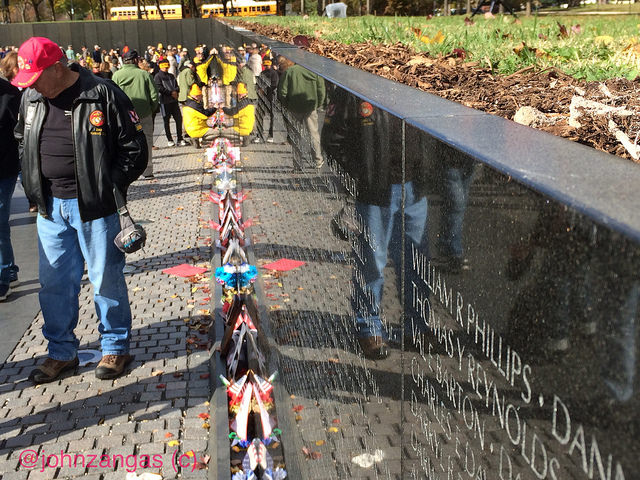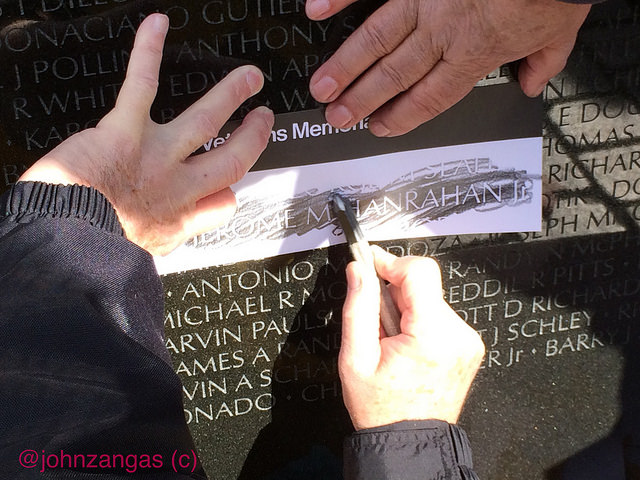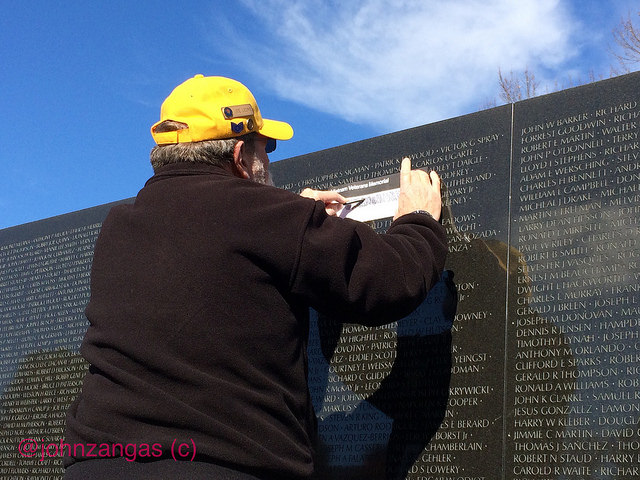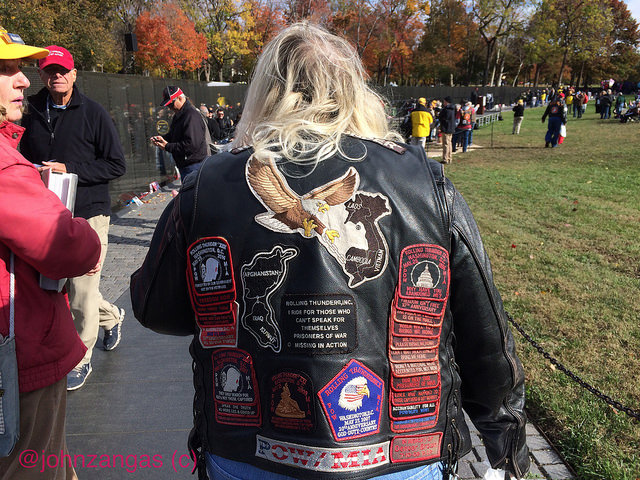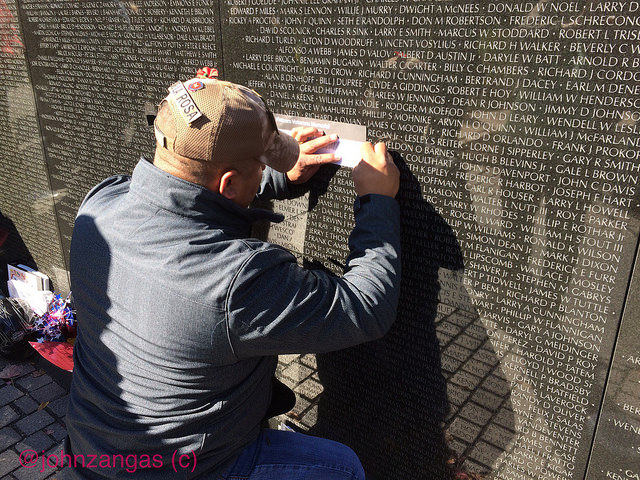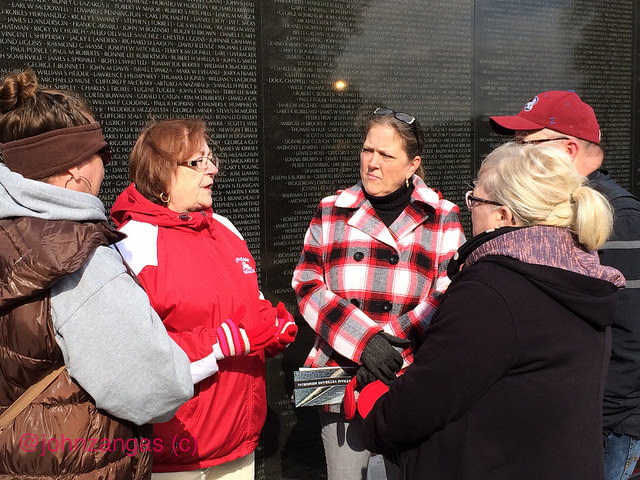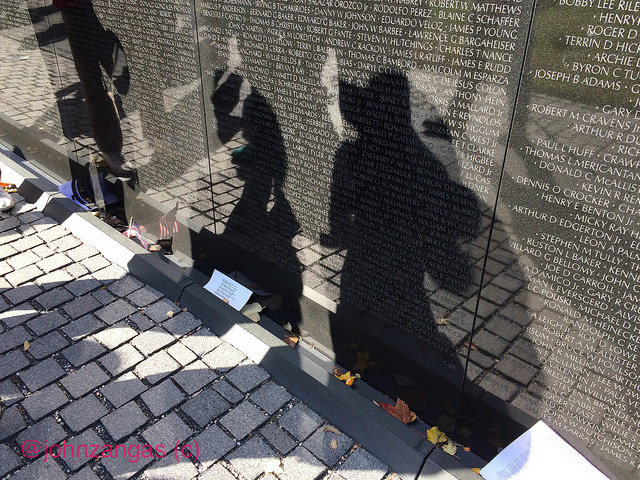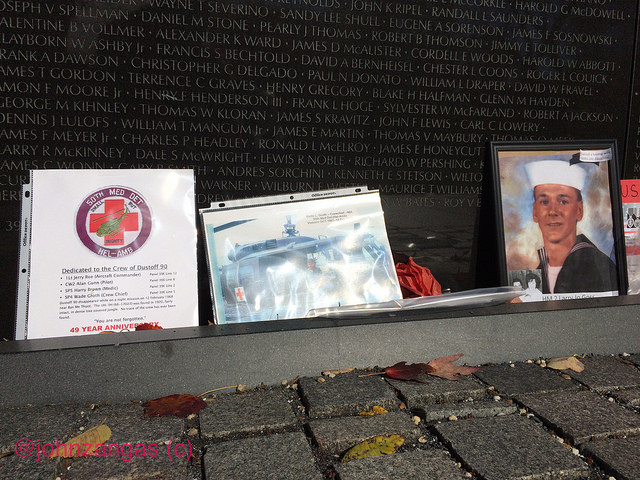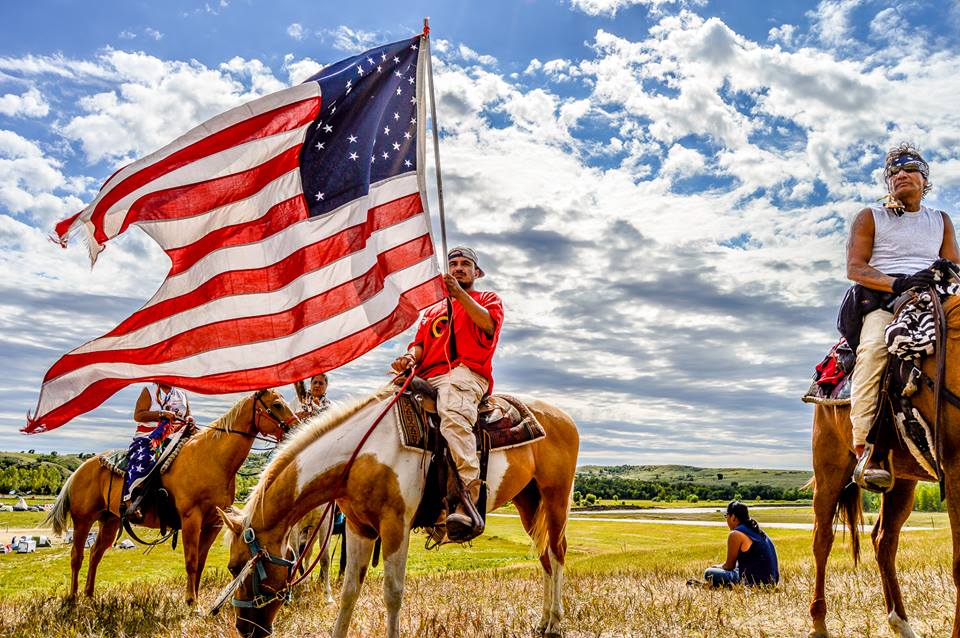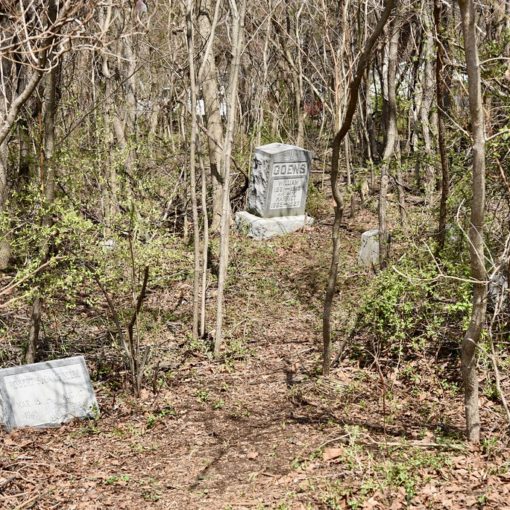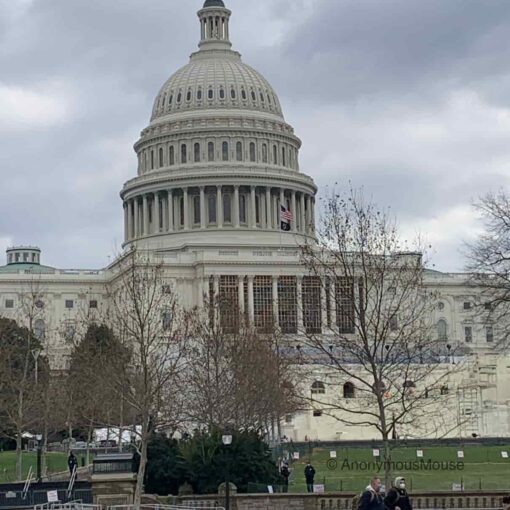They came from the four corners of the country by motorcycle, car, bus, plane and train. Some came by foot. They wore parts of old uniforms with medals, berets, old military boots, suits and jeans. They carried decades-old memorabilia, photos, letters, poems, and notes–the tokens of comrades lost in war.
On this Veterans Day, the 35th anniversary of the Wall, many left their tokens at its foot stone as they recalled scenes buried deep in memory and paused to contemplate while each name on the Wall–58,318 in all—was read over a speaker. They lingered and spoke, sharing their stories.
Volunteers traced images of the names on the Wall with pencil on rag paper for them to take home: unforgotten men and women who didn’t come home, a friend whose voice still resonates somewhere within, a battle buddy who took a bullet for them and a country that has all but forgotten why the war was fought in the first place.
The Vietnam War Memorial is made of black granite with a plain V-design carved downwards into the earth, so that its height is at ground level. One descends along its granite panels as if walking into a crypt. Its edges point towards the Washington Monument at one end and the Lincoln Memorial at the other.
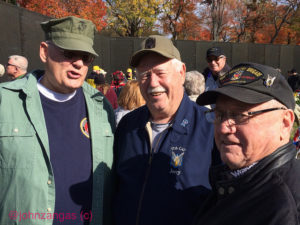 This war memorial is unlike any other in the nation’s capital. A flat black series of stones, with a mind-numbing number of etched names stretching over head, under foot and from left to right, it descends intothe earth. Almost all the other memorials and monuments in Washington, DC are old cracking plain white marble rising majestically to the sky.
This war memorial is unlike any other in the nation’s capital. A flat black series of stones, with a mind-numbing number of etched names stretching over head, under foot and from left to right, it descends intothe earth. Almost all the other memorials and monuments in Washington, DC are old cracking plain white marble rising majestically to the sky.
Nature does not love a wall and does what she can to knock it down. One builds a wall to keep sides apart, but it only serves to hold back progress and separate air. But this wall descends into earth so that new space is created. Veterans use this space to grieve. It can in some way be a sense of progress for them.
It also holds for them a unique virtual space to remember their comrades from any war, time or place.
The U.S. fought in the Vietnam War from 1959 until 1975, for almost 16 years, just one year less than the U.S. has been fighting in Afghanistan. One might consider that the lessons learned in Vietnam would not be repeated and could not be repeated. Why would a nation wisened by war want to relearn the hard lessons it was forced to learn during conflict? But it appears these are lessons it has chosen not to remember.
The Vietnam War was also fought in Laos and Cambodia, although no one officially admitted it at the time; it is now known that it was in fact a regional war over political issues as well as a proxy war between world powers. One could argue Vietnam won that war. But it was certain that the Veterans of that war on both sides certainly lost from it.
Veterans don’t care much about the politics of war. What was done cannot be changed. That is not what they’re here to do. What is left for them is never forgotting their comrades and the healing that continues now into the fifth decade since the war ended.
In a few more decades, fewer Veterans will make their annual return… and fewer firsthand stories will be told at the Wall.
Nearby is the Korean War Memorial, and farther down is the World War II Memorial, and still farther down, nearly hidden in a spread of trees, is the World War I Memorial, a small open stone structure that stands alone quietly, nearly forgotten. With barely one or two visitors an hour, usually tourists, the story it tells is a warning of what fate will come to the Vietnam War Memorial. But for now the veterans who have returned from Vietnam will continue to keep the stories of comrades who fell alive at the Wall.

